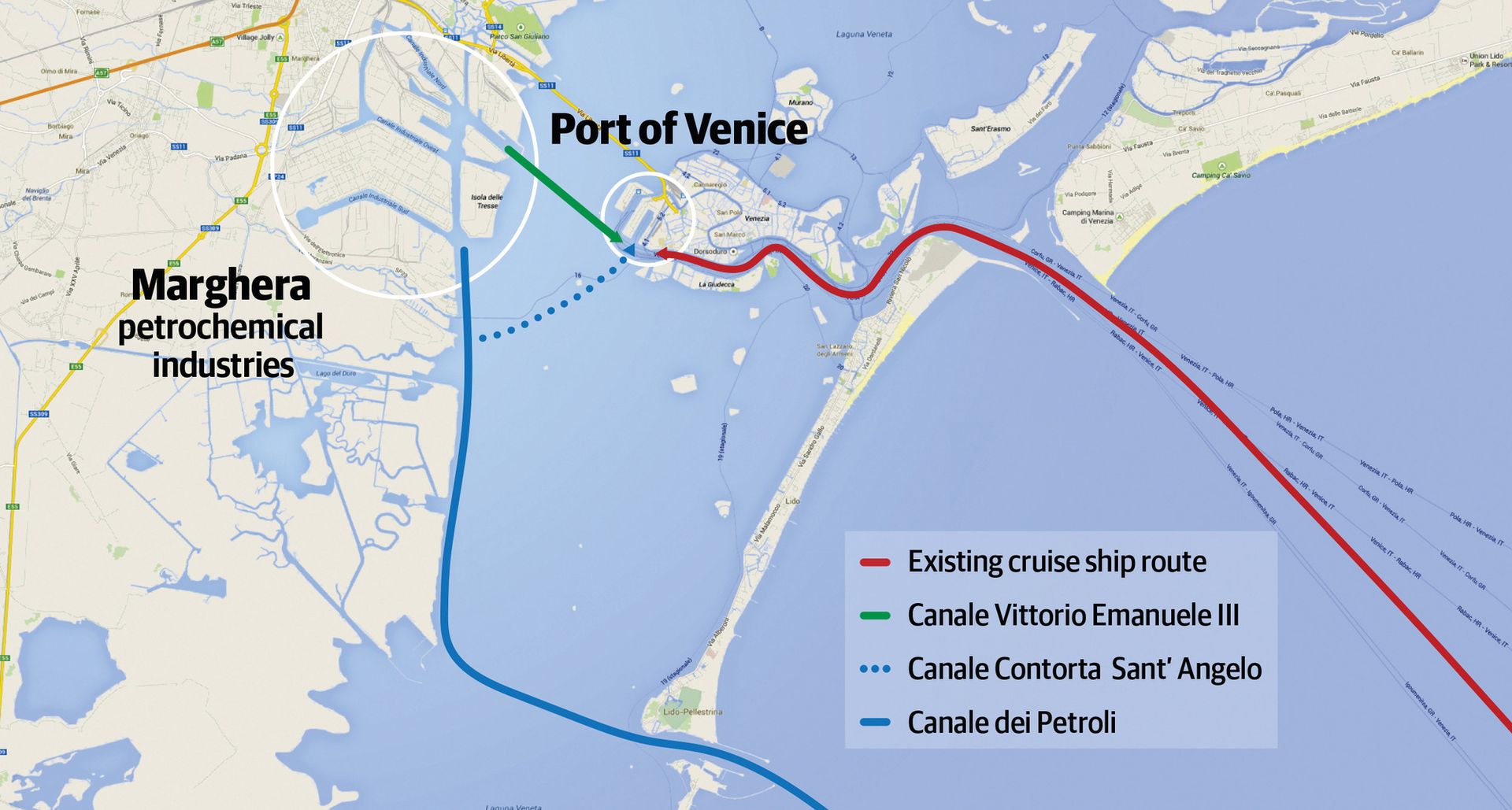Luigi Brugnaro, the mayor of Venice since 15 June, has not been slow to act in favour of the port of Venice. Last month he summoned the director and president of the Musei Civici (city museums) and told them that they could not open the exhibition in the Doge’s Palace on 18 September of photos by Gianni Berengo Gardin of the cruise ships looming over the city. The mayor wants it postponed to later in the year, when it would be combined with a didactic display on a new proposed route for the ships through the lagoon, via the Canale Vittorio Emanuele III.
This plan flies in the face of environmentalists, who say that this alternative to the passage of the cruise ships through the centre of Venice is no less damaging to the ecology of the lagoon than the previous proposal by the head of the Venice port authority, Paolo Costa. That would have brought them into the port from the south via the Canale Contorta, a plan that has been criticised by the official environmental impact study and rejected, on procedural grounds, by the regional court of appeal.

Both channels would require deep-dredging—in the case of the Vittorio Emanuele to a depth of 10m and width of 100m (currently 6m deep and 50m wide)—with serious impact on the hydrodynamics of the lagoon. This used to be the protective buffer between the city and the sea but it is becoming ever deeper and more like open sea due to loss of sediment since the deep Canale dei Petroli was dug in the 1960s to bring the petrol tankers to the industries at Marghera on its inner shore. (See our earlier story: The importance of mud to Venice)
Critics of the new plan say that the Vittorio Emanuele plan would also require the Canale dei Petroli to be widened to allow the passage back and forth of the more than 500 cruise ships a year together with the commercial shipping, and that part of the area to be dredged is particularly polluted with heavy metals.
The mayor, who campaigned on retaining the passenger port for Venice, is working closely with Costa, who has a strong interest in this because the Venice port authority is a major shareholder in the commercial company, Venice Terminal Passeggeri S.p.A, which the port authority set up in 1997 to run the port (the shareholders are: APVS S.r.l., company owned by Venice port authority and by Veneto Sviluppo, operational company of the Veneto Region, (53,00%); Finpax S.r.l. (22,18%); SAVE S.p.A., the company that runs Venice airport (22,18%), and the Venice chamber of commerce (2,64%).
The minister for infrastructure Massimo Lupi has convoked a meeting in September of the “Comitatone”, the interministerial committee that decides on major financing for Venice. Representatives of the shipping industry have been invited, but not the minister of culture, nor any of the environmental lobbyists.
Simultaneously, the town council is preparing Italy’s response to the official warning by Unesco’s World Heritage Committee in 2014 that it may put Venice on its World Heritage in Danger list, due to concerns over the “extent and scale of proposals for large infrastructure, construction and navigation projects in the lagoon”. The response is due at the end of this year.

